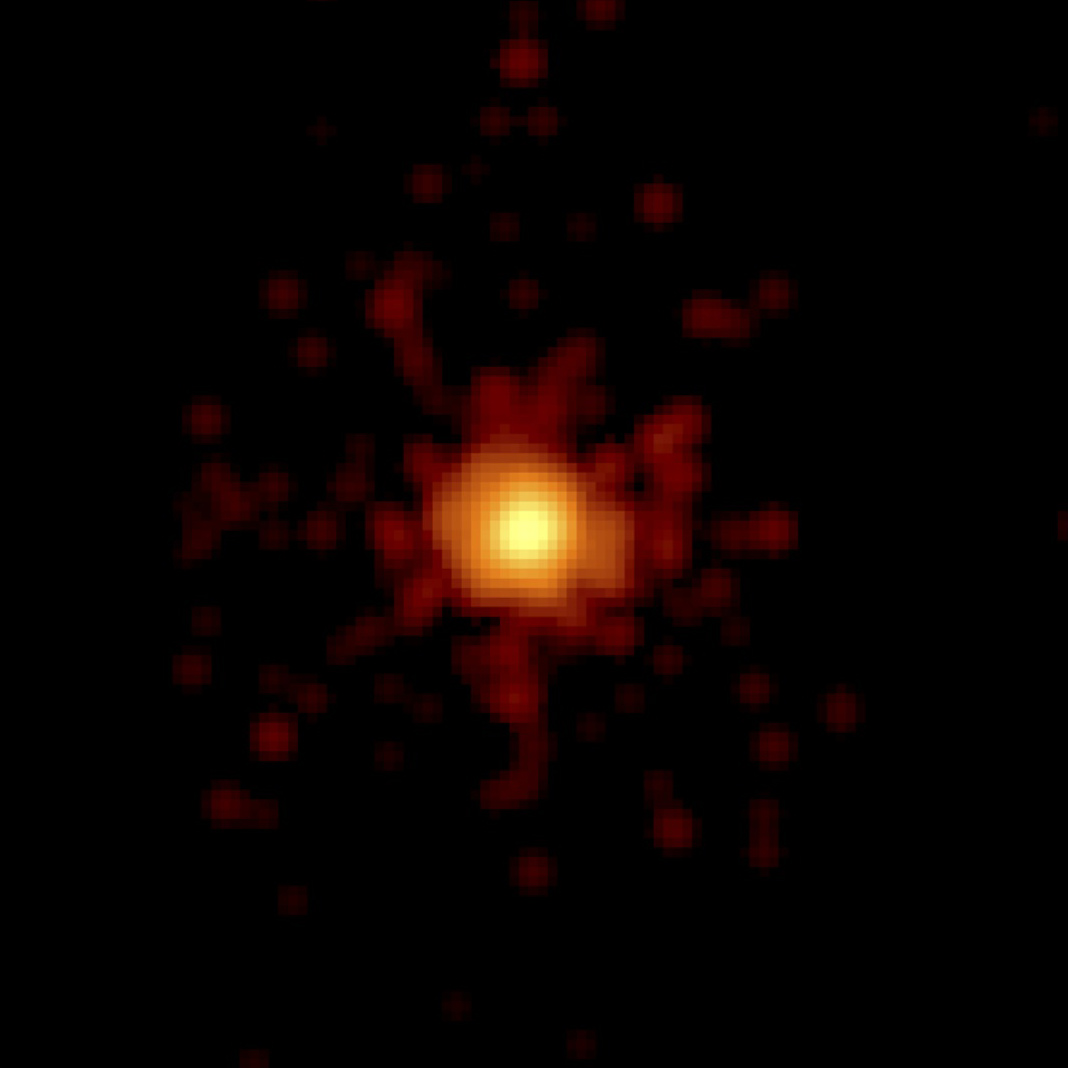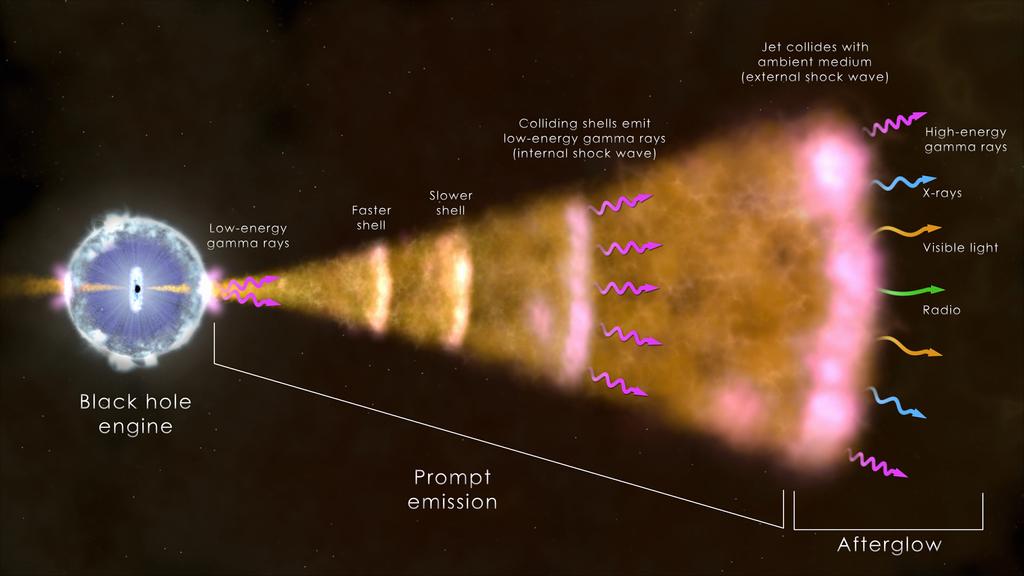Recently, a gamma-ray burst occurred with an optical flash that peaked at magnitude 7 on the astronomical brightness scale, easily visible through binoculars. It is the second-brightest flash ever seen from a gamma-ray burst.
On April 27th, a blast of light from a dying star in a distant galaxy became the focus of astronomers around the world. The gamma-ray burst was designated GRB 130427A and a trio of NASA satellites, working in concert with ground-based robotic telescopes, captured never-before-seen details that challenge current theoretical understandings of how gamma-ray bursts work.
NASA's Swift Gamma-ray Burst Mission detected the burst almost simultaneously with the GBM and quickly relayed its position to ground-based observatories.
In the most common type of gamma-ray burst, illustrated here, a dying massive star forms a black hole (left), which drives a particle jet into space. Light across the spectrum arises from hot gas near the black hole, collisions within the jet, and from the jet's interaction with its surroundings. Credit: NASA's Goddard Space Flight Center
Telescopes operated by Los Alamos National Laboratory in New Mexico as part of the Rapid Telescopes for Optical Response (RAPTOR) Project quickly turned to the spot. They detected an optical flash that peaked at magnitude 7 on the astronomical brightness scale, easily visible through binoculars. It is the second-brightest flash ever seen from a gamma-ray burst.
Just as the optical flash peaked, Fermi's Large Area Telescope (LAT) detected a spike in GeV gamma-rays reaching 95 GeV, the most energetic light ever seen from a burst. This relationship between a burst's optical light and its high-energy gamma-rays defied expectations.
"We thought the visible light for these flashes came from internal shocks, but this burst shows that it must come from the external shock, which produces the most energetic gamma-rays," said Sylvia Zhu, a Fermi team member at the University of Maryland in College Park.

Swift's X-Ray Telescope took this 0.1-second exposure of GRB 130427A at 3:50 a.m. EDT on April 27, just moments after Fermi and Swift detected the outburst. The image is 6.5 arcminutes across. Credit: NASA/Swift/Stefan Immler
The LAT detected GRB 130427A for about 20 hours, far longer than any previous burst. For a gamma-ray burst, it was relatively nearby. Its light traveled 3.8 billion years before arriving at Earth, about one-third the travel time for light from typical bursts.
"Detailed observations by Swift and ground-based telescopes clearly show that GRB 130427A has properties more similar to typical distant bursts than to nearby ones," said Gianpiero Tagliaferri, a Swift team member at Brera Observatory in Merate, Italy.
This extraordinary event enabled NASA's newest X-ray observatory, the Nuclear Spectroscopic Telescope Array (NuSTAR), to make a first-time detection of a burst afterglow in high-energy, or "hard," X-rays after more than a day. Taken together with Fermi LAT data, these observations challenge long-standing predictions.
GRB 130427A is the subject of five papers published online Nov. 21. Four of these, published by Science Express, highlight contributions by Fermi, Swift and RAPTOR. The NuSTAR study is published in the Astrophysical Journal Letters.
This animation shows the most common type of gamma-ray burst, thought to occur when a massive star collapses, forms a black hole, and blasts particle jets outward at nearly the speed of light. Viewing into a jet greatly boosts its apparent brightness. A Fermi image of GRB 130427A ends the sequence. Credit: NASA's Goddard Space Flight Center






Comments